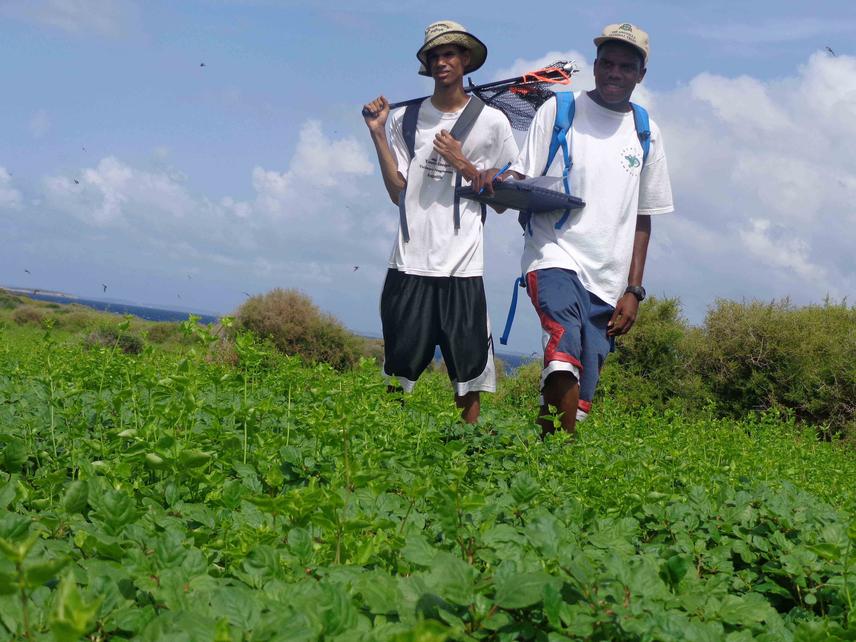Farah Mukhida
Dog Island has globally significant nesting populations of nine seabird species and is among the top three seabird islands in the northern Caribbean. It is home to at least three native lizard species and a variety of native plants, and provides nesting and foraging habitat to Green, Hawksbill, and Leatherback sea turtles, as well as to terrestrial and wetland birds. Despite their impressive numbers, populations of seabirds did not reflect their potential size, and the density of land birds and reptiles was low. Threats to its biodiversity included the alien invasive Black Rat and feral domestic goat.

Seabird count with Devon Carter and Jibri Lewis. © Farah Mukhida.
In 2011, the Anguilla National Trust, with partner agencies Fauna & Flora International, the Government of Anguilla, and the Royal Society for the Protection of Birds, secured funding to eradicate rats from Dog Island and to assess its goat population. In 2012, the eradication was completed, representing the largest island in the Caribbean to be cleared of rats. Later this year, fences will be erected to exclude goats from parts of the island. There is now an opportunity to monitor changes in island biodiversity after these mammals have been eliminated or excluded.
This project will aid conservation planning and evaluation at the national, regional, and global levels. By launching a long-term biodiversity monitoring programme on Dog Island, this initiative will help the Anguilla National Trust and its partners to evaluate the long-term success and outcomes of eradicating Black Rats from this offshore cay and of excluding goats from certain areas. We anticipate that there will be conspicuous improvements in the reproductive success and population growth of wild animals and plants, including those nine globally important populations of seabirds. Healthier wildlife populations would, in turn, improve the island’s overall ecological integrity and resilience. This potential contribution and increased ecological value can only be determined through effective and consistent biodiversity monitoring, including monitoring to ensure that Black Rats do not re-invade the island.
The monitoring programme will be valuable to Caribbean conservationists and policy-makers by demonstrating how quickly native biodiversity can recover in the absence of invasive species. In addition, the findings will provide a framework for future conservation actions on this island and will inform a public awareness programme about Dog Island, its regional and global importance, and the impacts of invasive species on small island ecosystems.